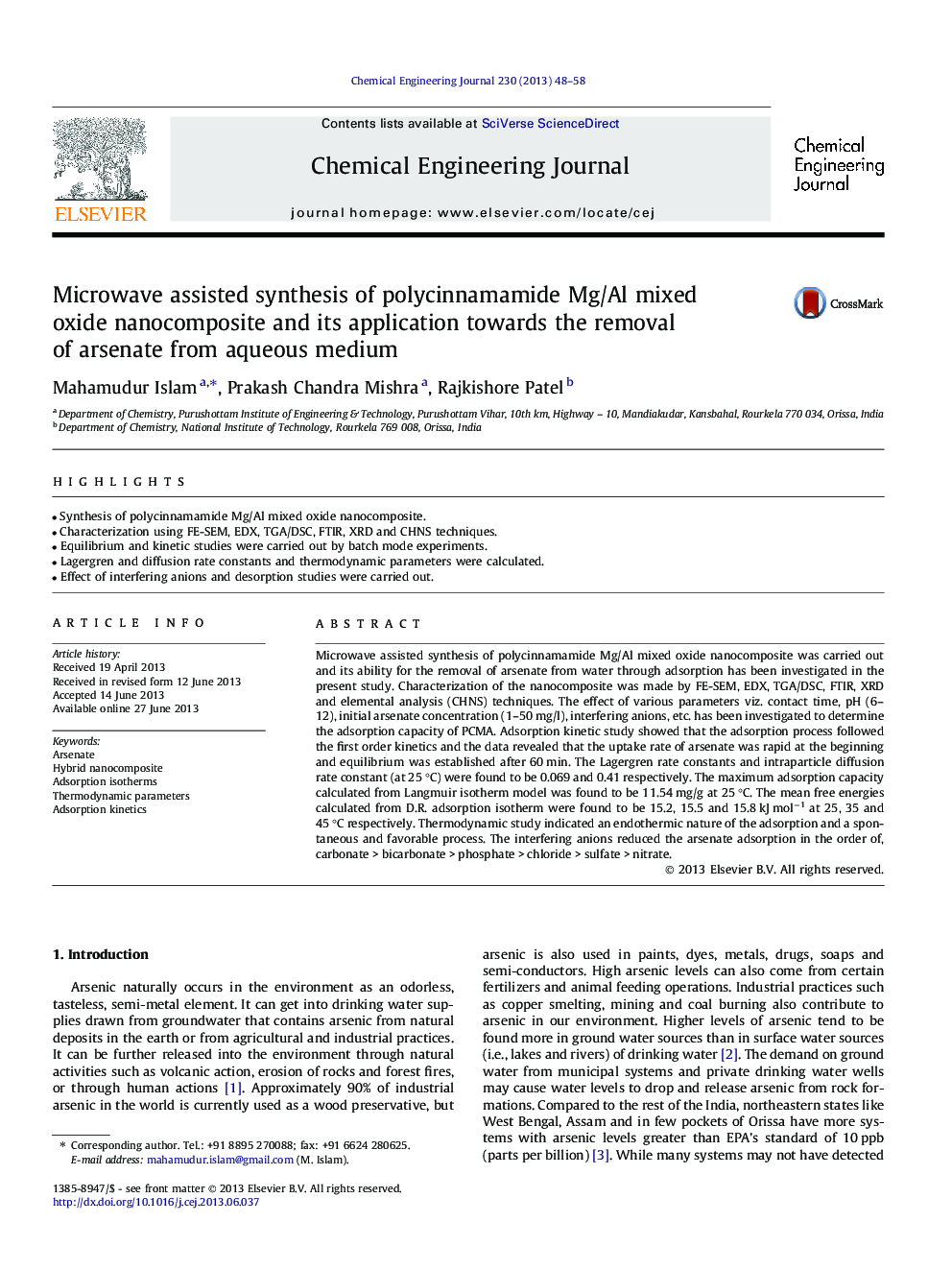| کد مقاله | کد نشریه | سال انتشار | مقاله انگلیسی | نسخه تمام متن |
|---|---|---|---|---|
| 148364 | 456411 | 2013 | 11 صفحه PDF | دانلود رایگان |

• Synthesis of polycinnamamide Mg/Al mixed oxide nanocomposite.
• Characterization using FE-SEM, EDX, TGA/DSC, FTIR, XRD and CHNS techniques.
• Equilibrium and kinetic studies were carried out by batch mode experiments.
• Lagergren and diffusion rate constants and thermodynamic parameters were calculated.
• Effect of interfering anions and desorption studies were carried out.
Microwave assisted synthesis of polycinnamamide Mg/Al mixed oxide nanocomposite was carried out and its ability for the removal of arsenate from water through adsorption has been investigated in the present study. Characterization of the nanocomposite was made by FE-SEM, EDX, TGA/DSC, FTIR, XRD and elemental analysis (CHNS) techniques. The effect of various parameters viz. contact time, pH (6–12), initial arsenate concentration (1–50 mg/l), interfering anions, etc. has been investigated to determine the adsorption capacity of PCMA. Adsorption kinetic study showed that the adsorption process followed the first order kinetics and the data revealed that the uptake rate of arsenate was rapid at the beginning and equilibrium was established after 60 min. The Lagergren rate constants and intraparticle diffusion rate constant (at 25 °C) were found to be 0.069 and 0.41 respectively. The maximum adsorption capacity calculated from Langmuir isotherm model was found to be 11.54 mg/g at 25 °C. The mean free energies calculated from D.R. adsorption isotherm were found to be 15.2, 15.5 and 15.8 kJ mol−1 at 25, 35 and 45 °C respectively. Thermodynamic study indicated an endothermic nature of the adsorption and a spontaneous and favorable process. The interfering anions reduced the arsenate adsorption in the order of, carbonate > bicarbonate > phosphate > chloride > sulfate > nitrate.
Journal: Chemical Engineering Journal - Volume 230, 15 August 2013, Pages 48–58